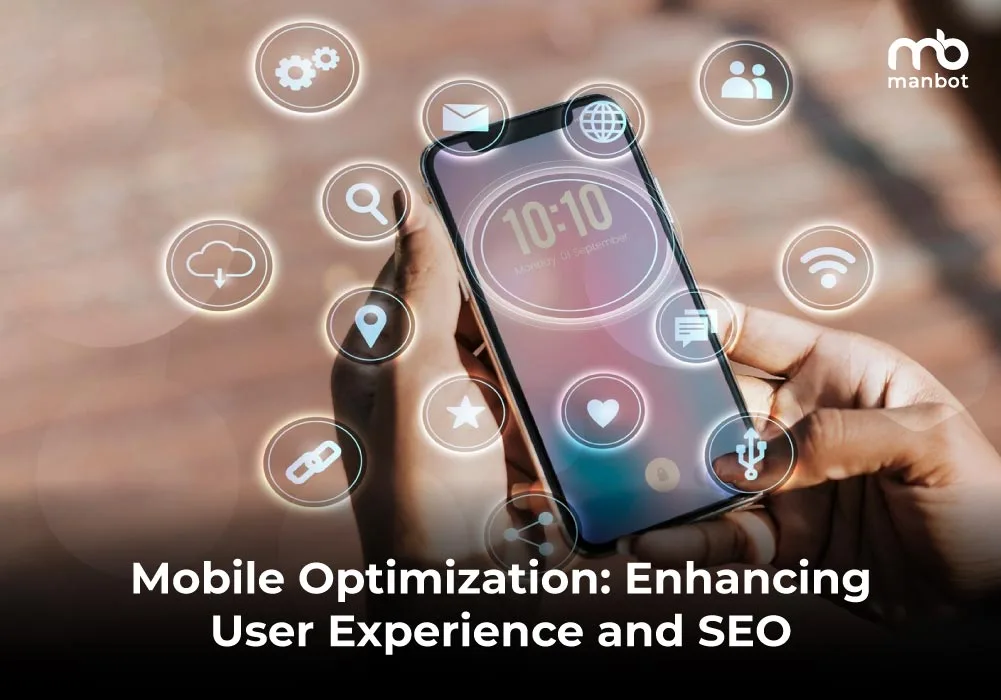
The Ultimate Guide to Mobile Optimization: Strategies for Enhancing Internet Site Performance on Smartphones and Tablets
The approaches for boosting internet site performance on mobile platforms go beyond simple adaptation; they include a thorough technique that includes responsive style, speed optimization, material techniques, and user experience enhancements. By diving right into the ins and outs of mobile optimization, businesses can not just meet individual expectations yet additionally stay in advance in an affordable electronic landscape.
Importance of Mobile Optimization
Mobile optimization plays a pivotal role in boosting customer experience and driving conversion rates in the ever-evolving digital landscape. With the increasing use mobile phones and tablet computers for searching the internet, making sure that websites are optimized for mobile gadgets has come to be important for organizations - Mobile Optimization. A mobile-optimized internet site not just adjusts seamlessly to different screen sizes yet additionally lots quickly, supplying users with a smooth and satisfying surfing experience
In today's fast-paced globe, individuals anticipate instant access to information on the go. A site that is not optimized for mobile phones risks shedding prospective consumers as a result of slow down filling times or an inadequate individual interface. By buying mobile optimization, services can cater to the requirements of their mobile audience, bring about greater interaction and boosted conversions.
In addition, search engines like Google prioritize mobile-friendly sites in their rankings, making mobile optimization vital for enhancing exposure and drawing in organic web traffic. Mobile Optimization. In general, the significance of mobile optimization can not be overemphasized, as it directly impacts user contentment, conversion rates, and general service success in the electronic world
Responsive Design Strategies
Carrying out receptive design techniques guarantees that websites dynamically adjust their design and content based upon the customer's gadget display dimension, offering a consistent user experience across different systems. Among one of the most usual methods utilized in responsive layout is creating fluid grids that permit material to resize proportionally to the screen dimension. This ensures that aspects on the webpage maintain their family member spacing and setup, enhancing the seeing experience for customers on different devices.
In addition, utilizing flexible pictures that can scale with the dimension of the viewport assists protect against pictures from being chopped or misshaped on smaller sized screens. CSS media questions play a vital role in receptive design by enabling designers to apply details designs based on the gadget features such as display width, height, and alignment. By leveraging media inquiries, internet sites can adapt their format and design to match mobile phones, tablet computers, and desktop computer displays flawlessly.
Integrating receptive design strategies not Look At This only boosts individual experience yet likewise adds to enhanced internet search engine positions, as internet search engine like Google prioritize mobile-friendly sites in their mobile search outcomes. By welcoming receptive design, internet sites can accommodate the diverse needs of individuals accessing content on a range of gadgets, eventually driving involvement and conversions.
Speed and Performance Optimization

One trick strategy is maximizing pictures and multimedia web content to minimize file sizes without endangering quality. Pressing pictures, leveraging modern-day image layouts like WebP, and careless filling offscreen photos are reliable approaches to speed up lots times (Mobile Optimization). Reducing HTTP demands, leveraging browser caching, and reducing server response times are essential steps in enhancing efficiency.
Executing more information a web content delivery network (CDN) can likewise considerably increase website speed by distributing content across several servers worldwide, lowering latency for users accessing the website from various places. Prioritizing crucial above-the-fold web content and delaying non-essential scripts can better boost perceived performance. By concentrating on speed and efficiency optimization, sites can supply a smooth and satisfying customer experience on mobile phones.
Mobile-Friendly Content Techniques
Mobile-friendly web content techniques include tailoring the discussion of information to match the smaller sized screens and on-the-go nature of smartphone and tablet individuals. Additionally, damaging up material into shorter paragraphs and using bullet factors can aid boost readability and make it less complicated for individuals to eat details rapidly.
Incorporating interesting visuals, such as pictures and videos optimized for mobile watching, can additionally boost the total user experience. These visuals must matter, high-quality, and load quickly to avoid users from shedding rate of interest. Furthermore, integrating interactive elements like quizzes, surveys, or surveys can enhance customer involvement and encourage active engagement.
Individual Experience Enhancements
Building on the foundation of mobile-friendly web content approaches, improving individual experience involves enhancing every touchpoint to guarantee seamless communication and contentment for mobile customers. One crucial aspect of enhancing visit the site user experience on mobile tools is ensuring fast packing times. Customers anticipate websites to load promptly on their mobile phones and tablet computers, and any delays can bring about irritation and boosted bounce rates. Applying responsive style is one more key consider improving individual experience. Receptive style guarantees that websites adapt to various screen dimensions and resolutions, providing a constant and user-friendly experience throughout different devices.
Optimizing forms for mobile users by minimizing the number of fields and using auto-fill functions can additionally improve the total individual experience. By concentrating on these individual experience improvements, web sites can properly involve and preserve mobile site visitors.
Verdict
Finally, mobile optimization is essential for boosting website performance on smart devices and tablets. By applying responsive layout methods, maximizing rate and performance, developing mobile-friendly material, and enhancing user experience, companies can efficiently get to and engage with their mobile audience. It is essential for internet sites to adapt to the enhancing mobile use trends in order to remain affordable in the digital landscape.